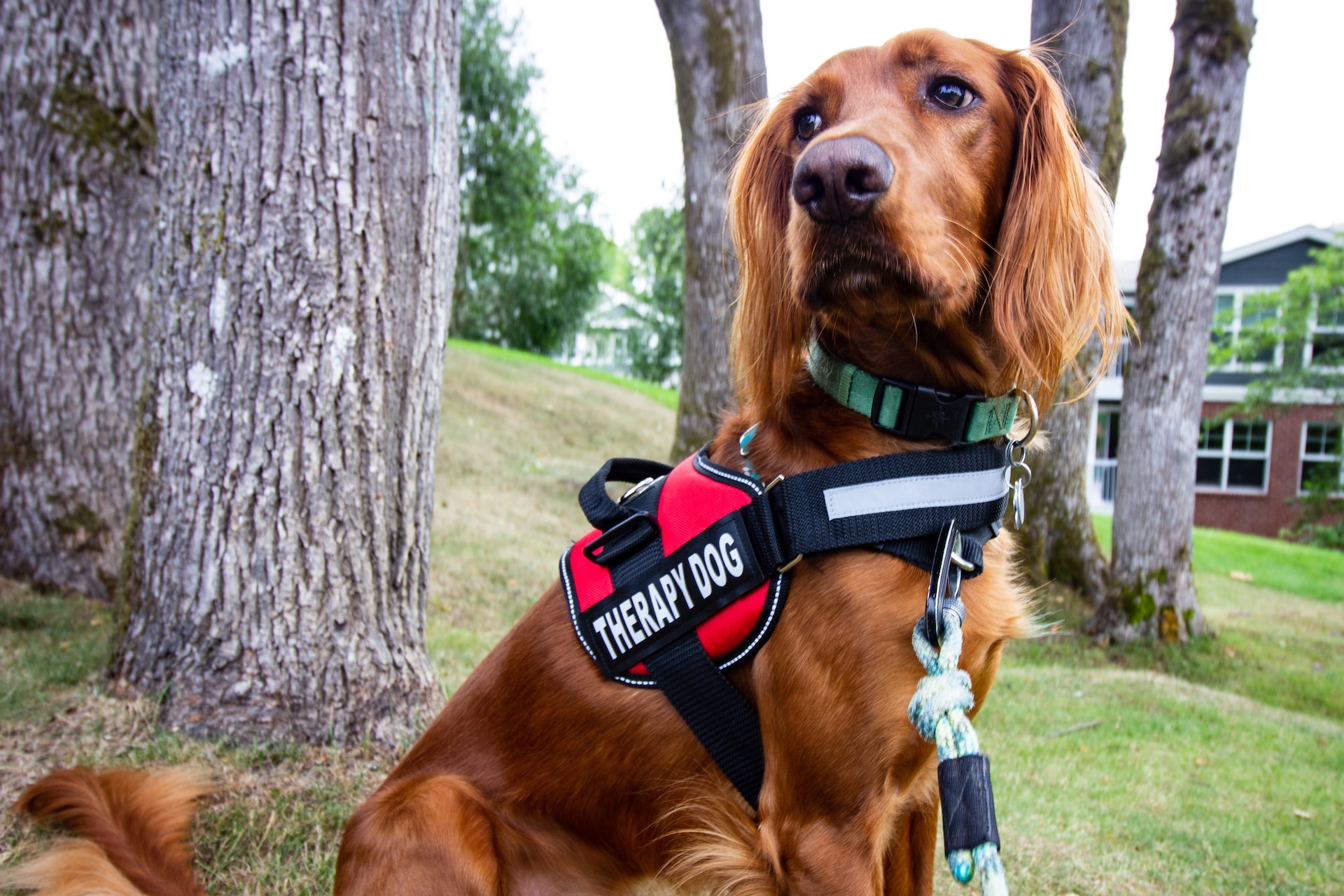
Partner dogs fall under the category of assistance animals which also includes Emotional Support Animals and Therapy Animals. Most of you reading this may already be familiar with Emotional Support dogs and cats as well as therapy dogs. The latter has a big role in animal-assisted therapy and contributes tremendously to helping people with cancer, depression, chronic pain and feelings of loneliness have a better quality of life. Psychology Today describes Animal-Assisted Therapy (AAT) as a therapeutic intervention that incorporates animals such as horses, dogs, cats, and birds into the treatment plan. Therapy dogs are special canines that are used to alleviate pain and various symptoms of mental health problems as well as aid the healing process. Therapy dogs are usually used in psychiatric treatments for many people. Partner dogs on the other hand are usually used as therapy animals by their owners.
Are Therapy Dogs and Emotional Support Dogs the Same?
The short answer is- No, they are not. The long is- they are similar in the way that both provide comfort and companionship but only the therapy dog is trained in public manners. Therapy dogs are expected to work in medical facilities like hospitals, psychiatric clinics, retirement homes, nursing homes, and assisted living communities. Traveling to these establishments may include the use of public transport and navigating the grounds involves includes mastery of public access manners. Therapy dogs and emotional support animals do not need to be certified under US law. However, if you would like your ESA or therapy dog to be protected under the Fair Housing Act and have guaranteed housing rights you need a medical letter from a therapist that attests to your need for an ESA or a therapy dog. Neither the Home Owner’s Association (HOA) nor landlords (or housing organizations) can deny housing to an ESA or a therapy dog. Please, note that you will have to formally declare your use of an ESA or a therapy dog to your landlord, HOA, or housing company. The obligations of housing providers are listed on the Fair Housing Act’s website. If you feel like your housing provider has not respected your civil rights and refused housing to your assistance animal incorrectly, please consider filing a complaint with your local Office of Fair Housing and Equal Opportunity (FHEO).
What Skills ESAs and Therapy Dogs Have to Master?
Please note that Emotional Support Animals and Therapy Dogs need to master basic obedience first. This includes recall (coming back when called), sit, stay, lay down, drop it/leave it. Both types of animals have to be potty trained and should not cause sanitary incidents unless they are very young and potty training is still underway.
While emotional support animals are expected to stay mostly at home, therapy animals can travel a lot since they are likely to work in facilities that provide mental health treatment. Therapy dogs must be socialized from a young age and should not be afraid to be handled by strangers or left under the supervision of medical workers. Therapy animals should not beg for food or jump to receive attention. This sort of behavior is not considered to be a problem for an Emotional Support Animal. Properly trained and socialized therapy animals can greet strangers in a calm demeanor and welcome petting and play. If you have an emotional support animal at home they don't need to be welcoming pets from strangers and they may be allowed a significant degree of mischief/playfulness.
Therapy dogs must be able to confidently navigate public buildings, avoid causing a disturbance, show bark control, be able to lie down for long periods, and stay by themselves. This type of dog has to walk beside their handler, not pull on the least, and immediately drop any item they hold when they receive the “drop it/leave it” command. On the other hand, ESAs generally do not deal with the same expectations and they simply need to show good manners at the local park. Therapy dogs are trained to have excellent off-leash responsiveness but they are expected to be on a leash or wear a harness most of the time.
What Makes Therapy Dogs Stand Out Compared to Emotional Support Animals?
Therapy dogs are generally very calm, even-tempered, and non-reactive. They can tolerate a bit of shouting, tugging on their coat, rough handling, and petting from strangers. Therapy dogs are not afraid of wheelchairs, mobility scooters, and walkers. Good therapy dogs are not afraid of unfamiliar spaces, they are people-oriented and can comfortably keep eye contact. Let's not forget that therapy dogs do not anywhere without their handlers/owners. The therapy dog handlers have to be tolerant, caring, and attentive. Therapy dog teams are expected to be polite, love to work with the elderly, and show genuine care and personal attention to the people they reach.
Benefits of Using a Therapy Dog
Therapy dogs are proven to help decrease feelings of depression by boosting oxytocin levels. The oxytocin hormone is associated with the male and female reproductive systems, bonding between parent and child as well as physical exercise. Plenty of scientific research like this one from 2019 and this one in the Journal of College Student Psychotherapy from 2015 show that therapy dogs can have major benefits for the elderly and college students.
The interactions with therapy dogs can aid the development of social skills, improve reading capabilities for children and relieve stress. This research paper from January 2018 suggests that a therapy dog program can help children in kindergarten improve their reading fluency and motivate them.
The comfort and companionship provided by therapy dogs have proven to help ease preoperative and dental anxiety according to the research by Morgan Royer at the University of Tennessee at Chattanooga and the clinical trials conducted by the University of Tromso in 2017.
Therapy dogs can provide a sense of purpose, better mindfulness, and reduce symptoms of anxiety as indicated in this scientific article in the Journal of Further and Higher Education Issue 5 in 2021.
Animal-assisted therapy involving dogs can be used to reduce perceived stress and symptoms of agoraphobia and to improve social awareness and communication in adults with Autism as indicated in this research paper published in the Journal of Autism and Developmental Disorders in 2020.
In addition, the positive effects of AAT have been scientifically proven for adults with intellectual disabilities as evident in this pilot study by the American Association on Intellectual and Developmental Disabilities in June 2017.
Therapy dogs have been reported to have a morale boost and some companies use them as part of stress relief therapy. For example, globally-known companies, such as Google and Amazon, allow employees to bring their pet dogs to work, check this article.
Perhaps the most significant benefit is that dogs give you unconditional love and they do not judge you for your path in life. Many people describe therapy dogs to have “soul eyes” and lift their spirits just with their gaze. If you decide to train a therapy dog for yourself or to work as a team please take a look at our Therapy Dog Training Course.












